Click to view our Accessibility Statement or contact us with accessibility-related questions























[Ongoing] Balanced Audio Gear

search
close
Sort by: Newest
keyboard_arrow_down
Rhamnetin
172
Oct 21, 2018
Right now my favorite sounding DACs are single ended (Chord) while my favorite headphone amps are balanced ones that convert SE signal to balanced (balanced Dynalos, KGSSHV Carbon). On paper this isn't even ideal. Makes me want a balanced Chord-type FPGA+pulse array DAC.

Rhamnetin
172
May 10, 2019
Yeah that has always been their approach. I've since left Chord behind; sufficient for headphone use but don't really cut it for high end loudspeaker use (not compared to what else is out there at least). I've since replaced my Hugo 2 with the Bricasti M1 SE.
carliber
31
Mar 28, 2021
As of early 2020(?), there is also E1DA PowerDAC v2 - FPGA based and balanced too.

mikeonline
108
Oct 21, 2018
Don't mean to argue with anyone, but I find it odd when I read about people not being able to hear the difference between balanced and single ended. To my ears it's such an obvious difference in the placement of sounds that I can't see how anyone wouldn't be able to immediately tell the difference after listening to single ended for a while and then switching to balanced. It's not even a question of whether your ears are good enough to hear certain frequencies or anything like that. The main difference is in, as I said earlier, how sound is positioned. The main difference I hear when switching to balanced input is greater or "exaggerated" separation, and and overall wider soundstage/headstage. Again, this difference is so jarring to me that I don't understand this talk about not being able to tell the difference.
I'm not saying that this change is necessarily better though. I've heard a few headphones via balanced and single ended connection on a few different balanced amps (Questyle CM400i, Acro L1000, Opus #2 DAP (2.5mm balanced). The headphones were: Ether C (non flow), Ether Flow, HD600, Audioquest Nightowl Carbon, Audeze LCD-i4 (not mine, my cousins), and finally the Hifiman Edition X v2. Out of all of those I can honestly say that I only prefer(d) the sound of balanced over single ended on the Ether C, HD600, and Nightowl carbon. The reason relates to why I used "exaggerated" to describe separation and soundstage/headstage via balanced. On headphones with an already respectable amount of headstage, the increased separation sounds "off". It's almost sounds too wide or too separated and I don't like it. This is why I've come to the conclusion that balanced really only benefits headphones with a more intimate/congested presentation, i.e. closed backs, hd600/650/6xx, etc. After I heard the HD600 balanced, and going back and forth A/Bing, I never went back to single ended.
Again, I'm not trying to argue. I can understand a number of posts about not seeing the benefit of balanced, but I just read a few posts here about not even being able to tell the difference in sound and only seeing the benefits balanced gives in driving power or better components. Sorry if my ears are just really weird and no one is hearing what I'm hearing, but I just wanted to add to this thread in hopes that someone wont cast aside the possibility of trying balanced out.
I'm not saying that this change is necessarily better though. I've heard a few headphones via balanced and single ended connection on a few different balanced amps (Questyle CM400i, Acro L1000, Opus #2 DAP (2.5mm balanced). The headphones were: Ether C (non flow), Ether Flow, HD600, Audioquest Nightowl Carbon, Audeze LCD-i4 (not mine, my cousins), and finally the Hifiman Edition X v2. Out of all of those I can honestly say that I only prefer(d) the sound of balanced over single ended on the Ether C, HD600, and Nightowl carbon. The reason relates to why I used "exaggerated" to describe separation and soundstage/headstage via balanced. On headphones with an already respectable amount of headstage, the increased separation sounds "off". It's almost sounds too wide or too separated and I don't like it. This is why I've come to the conclusion that balanced really only benefits headphones with a more intimate/congested presentation, i.e. closed backs, hd600/650/6xx, etc. After I heard the HD600 balanced, and going back and forth A/Bing, I never went back to single ended.
Again, I'm not trying to argue. I can understand a number of posts about not seeing the benefit of balanced, but I just read a few posts here about not even being able to tell the difference in sound and only seeing the benefits balanced gives in driving power or better components. Sorry if my ears are just really weird and no one is hearing what I'm hearing, but I just wanted to add to this thread in hopes that someone wont cast aside the possibility of trying balanced out.

Kotomine
26
Apr 30, 2019
mikeonlineI know this is 27 weeks old but your post made me want to try out balanced audio and I thought I should mention that as it didn't seem to get much attention. That type of detailed opinion on the matter was just what I was looking for.

Dr.JamesWilson
11
Aug 11, 2020
mikeonlineI too hear a pretty large difference between balanced and single ended... About a year ago I was listening to my buddy's HD598s and was tripping about how they sounded so different than mine. After about an hour of trying to understand why... they were balanced.
I feel like thats the best kind of A/B test... when you have no clue you're doing one.

ElectronicVices
2937
Jun 2, 2018
I'm going to offer up my own personal view on the situation as well as my experience. I personally don't believe a balanced connection is inherently better in and of itself over singled-ended. I do however think that gear that includes a balanced topology has certain advantages given ones situation.
My signal chain(s): Laptop>Teac UD-501>Denon 2808>Emotiva XPA-100's>Emotiva ERT 8.3 (Single-ended) Laptop>Teac UD-501>Cayin IHA-6>Elex/HE500 (Fully Balanced) Laptop>Teac UD-501>Gustard H10>more headphones than I would care to list (Partially Balanced)
My DAC sits in the rack with the rest of my AV gear for the stereo/HT, I use the singled ended outputs into the receiver's 5.1 analog inputs and it acts as a pre-amp to my amps (1 each for L/R) again via RCA cables. The cables are all 2 meters or less for this chain. My headphone amps sit on a table at the end of my couch, around 15 ft 'as the cable runs' from the DAC and past power outlets. I use the balanced XLR output in this instance. The UD-501 & Cayin are both fully balanced designs and the UD offers a dual-mono configuration down to the transformers. The Cayin has some apparent advantages when being run balanced. It's OI drops from 10ohms to .3, and it goes from 2ish watts to 7 watts. I have tried the single ended output into the Cayin as I wanted to try various SE only headphones with it (no splitting/summing circuit).
SE vs Balanced effects with my headphone gear:
1) Balanced is more flexible with the .3 ohm output. I have a lot of pairs I would like to use with this thing (Cayin). That 10 ohm OI of SE out (120ohm on the 2nd SE output) will impact the frequency response of several of them.
2) The balanced run has a blacker background and greater soundstage size by a shade on the Cayin, more than likely a byproduct of reduced noise and crosstalk. On the Gustard it just gives it a slightly blacker ground.
3) Knowing my HE500's are getting more than enough wattage and should I ever decide to pickup a used HE-6, will not have to resort to re-purposing a speaker amp.
Additional Comments:
My prior DAC included a pre-amp, although not the best digital implementation it still sounded decent controlling the volume. That DAC was a balanced differential design and my XPA-100's accept XLR and/or RCA. I couldn't tell a difference on the monoblock/tower chain as the run is short and each amp only handles one channel from separate cables. I am personally a big fan of dual-mono configurations as you can see from my choice of gear. To me they give benefits to soundstage, imaging and low-level listening enjoyment. Since many of the balanced gear designs are dual-mono I think the benefits from that design philosophy get lumped in with "Balanced is great man!!"
My signal chain(s): Laptop>Teac UD-501>Denon 2808>Emotiva XPA-100's>Emotiva ERT 8.3 (Single-ended) Laptop>Teac UD-501>Cayin IHA-6>Elex/HE500 (Fully Balanced) Laptop>Teac UD-501>Gustard H10>more headphones than I would care to list (Partially Balanced)
My DAC sits in the rack with the rest of my AV gear for the stereo/HT, I use the singled ended outputs into the receiver's 5.1 analog inputs and it acts as a pre-amp to my amps (1 each for L/R) again via RCA cables. The cables are all 2 meters or less for this chain. My headphone amps sit on a table at the end of my couch, around 15 ft 'as the cable runs' from the DAC and past power outlets. I use the balanced XLR output in this instance. The UD-501 & Cayin are both fully balanced designs and the UD offers a dual-mono configuration down to the transformers. The Cayin has some apparent advantages when being run balanced. It's OI drops from 10ohms to .3, and it goes from 2ish watts to 7 watts. I have tried the single ended output into the Cayin as I wanted to try various SE only headphones with it (no splitting/summing circuit).
SE vs Balanced effects with my headphone gear:
1) Balanced is more flexible with the .3 ohm output. I have a lot of pairs I would like to use with this thing (Cayin). That 10 ohm OI of SE out (120ohm on the 2nd SE output) will impact the frequency response of several of them.
2) The balanced run has a blacker background and greater soundstage size by a shade on the Cayin, more than likely a byproduct of reduced noise and crosstalk. On the Gustard it just gives it a slightly blacker ground.
3) Knowing my HE500's are getting more than enough wattage and should I ever decide to pickup a used HE-6, will not have to resort to re-purposing a speaker amp.
Additional Comments:
My prior DAC included a pre-amp, although not the best digital implementation it still sounded decent controlling the volume. That DAC was a balanced differential design and my XPA-100's accept XLR and/or RCA. I couldn't tell a difference on the monoblock/tower chain as the run is short and each amp only handles one channel from separate cables. I am personally a big fan of dual-mono configurations as you can see from my choice of gear. To me they give benefits to soundstage, imaging and low-level listening enjoyment. Since many of the balanced gear designs are dual-mono I think the benefits from that design philosophy get lumped in with "Balanced is great man!!"
SimonPac
2
Jun 1, 2018
Balanced audio connections do not use the signal/power ground as one of the two wires required to convey a single (say left channel or right channel) audio signal. Instead each of the two balanced wires for a channel carries the same waveform but 180 degrees out of phase (phase inverted) with respect to the other, each waveform being of nominally equal amplitude. The main potential advantage is that the ground (0V) connection of the equipment is not carrying an audio input (or output) signal.
There is no inherent reason for balanced inputs to work better other than superior common mode interference rejection and the avoidance of ground loops. Neither possible problem is normally a major factor for domestic audio at line levels. If the amplifier is truly balanced throughout it is possible that signal current in the ground path will be reduced slightly, to the benefit of distortion but again this should not be an issue in well-designed equipment. A truly balanced throughout amplifier may generate a more complex distortion characteristic because it essentially contains two separate amplifier circuits, one handling the in-phase signal and the other the out-of-phase signal. Again, hopefully not a real issue.
A true balanced output stage will be able, potentially, to deliver twice the voltage swing and four times the power into a given load, for the same DC voltage used to supply the amplifier. A balanced headphone amplifier with a balanced headphone lead will reduce ground wire intermodulation of the channels, though only very slightly unless the lead, whether within the amp or the external lead, is of very poor quality, and carries the left and right channel grounds for a significant length.
The number of AC power transformers in a piece of equipment is entirely unrelated to whether the equipment is balanced in signal operation. Some equipment uses audio balancing input transformers to convert from balanced to unbalanced or vice-versa. These are normally very small and shielded magnetically and electrically.
A stereo DAC requires a minimum of 2 DAC circuits. A balanced stereo DAC requires a minimum of 4 DAC circuits. Many DAC chips contain more than one actual DAC circuit. The number of DAC chips is not a direct indicator of balanced or unbalanced operation.

GUTB
238
May 4, 2018
Balanced is better not because of common mode noise rejection (the reason often given) but because a truly balanced topology driving a balanced signal has better performance. Voltage amplification swings between - and +, and in balanced topology each amp circuit only needs to push - and + for one channel; this also means component matching is more critical but assuming its engineered right balanced will always be better.
Truly balanced means the amp topology is balanced, not that a single-ended signal gets split. One amp circuit for each channel. The downside is that single-ended outputs are degraded because the balanced signal has to be combined in some manner.
Balanced in DACs means something a little different -- still one line-level amp circuit for each channel but also one DAC chip for each channel (full differential balanced). DAC chips have better performance and noise specs when used in a balanced configuration.
The best: full differential / true balanced DAC -> XLR -> true balanced amp -> balanced headphones.
Quick visual guide: If an amp has more than one AC transformer it will be true balanced. If it has one transformer but the literature says its balanced, try to find assurance that it is true balanced (ie, there are secondary wingdings used off the single transformer which is a substitute for having two of them). DACs will often have two transformers but the second one is normally not used for balanced operation you'll have to find assurances in literature but if you can see more than one DAC chip than it's probably balanced.
Truly balanced means the amp topology is balanced, not that a single-ended signal gets split. One amp circuit for each channel. The downside is that single-ended outputs are degraded because the balanced signal has to be combined in some manner.
Balanced in DACs means something a little different -- still one line-level amp circuit for each channel but also one DAC chip for each channel (full differential balanced). DAC chips have better performance and noise specs when used in a balanced configuration.
The best: full differential / true balanced DAC -> XLR -> true balanced amp -> balanced headphones.
Quick visual guide: If an amp has more than one AC transformer it will be true balanced. If it has one transformer but the literature says its balanced, try to find assurance that it is true balanced (ie, there are secondary wingdings used off the single transformer which is a substitute for having two of them). DACs will often have two transformers but the second one is normally not used for balanced operation you'll have to find assurances in literature but if you can see more than one DAC chip than it's probably balanced.

jgp1212
291
Apr 30, 2018
Rumor has it that massdrop has a matching balanced dac in the works for the thx aaa amplifier?
Is there any truth to this?
Is there any truth to this?
Ageless
104
Apr 26, 2018
Are the Questsyle lineup of dac/amps fully balanced? I'm very interested in the CMA400i

alexandros
92
Apr 24, 2018
I mainly use iems and portable dac/dap with a portable amp
Several months ago i bought ibasso PB3 amp with 2.5 balanced out along with the usual 3.5 single ended...
Till now using several hybrid or exclusively balanced armature iems i cannot detect any audible difference between balanced out and single end out..
That is using PB3s 2.5 balanced out with expensive iems above the 300$ price range...

DoctorX
301
Apr 23, 2018
I'm not fully convinced the benefit of going balanced isn't just because the balanced gear is better built and costs more.
All of those comparisons I see are not comparing the same gear or the same circuit. Has anyone ever done a comparison using the same balanced output using a single ended adapter for the single ended test?
But then again, even if the only benefit of going balanced is because manufacturers puts better circuit behind the balanced output, does that really matter in practice?
At the end of the day, it just costs too damn much going balanced so count me out.
All of those comparisons I see are not comparing the same gear or the same circuit. Has anyone ever done a comparison using the same balanced output using a single ended adapter for the single ended test?
But then again, even if the only benefit of going balanced is because manufacturers puts better circuit behind the balanced output, does that really matter in practice?
At the end of the day, it just costs too damn much going balanced so count me out.
jerlad
79
Jun 18, 2018
What do you consider to be the less-obvious benefits of balanced output?
My first contribution to this thread offered some things to listen for in order to determine whether the gear you are using is delivering everything to your likeing.
I completely agree with you that there are many fine single ended devices. I think there are many whose component list and build quality are state-of-the-art. I am most often listening through SE because of where I am and what I may have with me at the time. I listen to music at work and the setup there is SE. When I come home, I listen through a balanced connection.
My first contribution to this thread offered some things to listen for in order to determine whether the gear you are using is delivering everything to your likeing.
I completely agree with you that there are many fine single ended devices. I think there are many whose component list and build quality are state-of-the-art. I am most often listening through SE because of where I am and what I may have with me at the time. I listen to music at work and the setup there is SE. When I come home, I listen through a balanced connection.

Rhamnetin
172
Jun 20, 2018
jerladLike you, I listen to music at work with a single ended setup, and balanced at home. I can speak for two headphones like this, the ZMF Blackwood and ZMF Ori.
The SE setup is just a Chord Hugo 2 (though I've tried this with a Schiit Lyr 3 with excellent NOS tubes, zero improvement), the balanced setup is Chord Hugo 2 + Mjolnir Audio Pure BiPolar (this amp converts SE signal into balanced using Nelson Pass's "Super Symmetry" input). I have also used the Audeze LCD-4 with a Hugo 2 + Schiit Lyr 3, and Hugo 2 + Pure BiPolar but that's just unfair considering the Pure BiPolar is in a completely different class than the Lyr 3.
So the audible improvements with the ZMF headphones are: fuller bass, harder hitting bass, considerably better layering/instrument separation, far more transparent and overall cleaner treble but this isn't just because it's balanced.
A really interesting test though would be if I were to compare the Pure BiPolar amp to a really good single ended amp like a Bottlehead Mainline or an excellent SET speaker amp repurposed for headphones. But that's not gonna happen.
The SE setup is just a Chord Hugo 2 (though I've tried this with a Schiit Lyr 3 with excellent NOS tubes, zero improvement), the balanced setup is Chord Hugo 2 + Mjolnir Audio Pure BiPolar (this amp converts SE signal into balanced using Nelson Pass's "Super Symmetry" input). I have also used the Audeze LCD-4 with a Hugo 2 + Schiit Lyr 3, and Hugo 2 + Pure BiPolar but that's just unfair considering the Pure BiPolar is in a completely different class than the Lyr 3.
So the audible improvements with the ZMF headphones are: fuller bass, harder hitting bass, considerably better layering/instrument separation, far more transparent and overall cleaner treble but this isn't just because it's balanced.
A really interesting test though would be if I were to compare the Pure BiPolar amp to a really good single ended amp like a Bottlehead Mainline or an excellent SET speaker amp repurposed for headphones. But that's not gonna happen.

Duncan
3731
Apr 16, 2018
Hey folks. We have a winner of the Massdrop x HIFIMAN HE4XX Planar Magnetic Headphones. Congrats to @rantng! The giveaway has concluded, but if you have any questions (or answers), keep them coming. Thanks y'all.
Showing 30 of 204
PRODUCTS YOU MAY LIKE
Trending Posts in Audiophile

robbertwilson
Shop Premium Women Golf Shirts at ApparelnBags
Be the trendsetter on the golf course with our stylish collection of custom polo shirts for women. Whether you're swinging your way to victory or simply want to rock that sporty chic look, our polo shirts for women are here to make you stand out. Moreover, we understand that style and quality go hand in hand. That's why, from golf shirts for women to long sleeve polo shirts for women , we handpick the best products to ensure you experience comfort and durability. Also, our women polo shirts offer the perfect blend of style and functionality, so you can focus on your game without compromising style. So, grab your favorite polos today. Remember, it's not just a game; it's a lifestyle, and our polos will help you ace both!
Apr 25, 2024

SsButerbal
Ringing in PC38X's
I recently got this headset, and wow is it good. My only issue is when certain people talk on discord, I can hear a really high pitched ringing. I fiddled with a bunch of settings, computer audio and discord, and nothing seems to solve the issue. It is primarily if not all in my right ear only. Is there something wrong with my headset, or was that ringing always there I can just hear it cause the headset is THAT good? I haven't had any issues with any other application, though I have yet to test if I can hear the ringing on a different version of discord, say on my xbox instead of my pc. Only other issue I've had is occasional static, but I can't tell if it's from the headset or the show/game/etc.
Apr 24, 2024
itsamepe
Sennheiser PC37X randomly goes bad after disconnecting the cable ?
Greetings, Yesterday I was using my headset like normal with my macbook, just listening to music and on a call with people like usual, and the headset was perfectly fine. The stock wire that came with the headset is extremely long and yesterday it annoyed me very much that it kept getting tangled with itself, so I decided to see if the cable is replaceable. I pulled out the cable from the headset and saw the adapter, and looked online for a replacement. Upon plugging it back in, the audio sounded extremely muffled and washed out. Im not sure what I did wrong to make it mess up like that as I've always taken good care of it, ive had it for about 2 years and its always just been chilling on my desk, but anywho I thought the cable just went bad and ordered a replacement. The replacement came, and the issue is still persistant, so I am not sure what the issue is I've tried multiple different headsets and the issue is not with the port, and I also tried it with my windows laptop and...
Apr 23, 2024

MrChiSox
Big changes coming to my tiny little music room, I've recently purchased a new stack. Currently figuring out where to locate it all and ordering up the necessary cables, it won't be too long before I'm up and running. I am now the proud owner of a brand new stack. It's a European brand called Earmen. Amp, DAC, Streamer & Linear Power Supply. It won't be long!
https://www.youtube.com/watch?v=MB15yM4UptQ
Apr 23, 2024

Briankan
Recommendation for my next headphone set? I have Koss 95x
Hey all, What would you recommend I get next and why? I have Koss ESP-95x electrostatic massdrop headphones. These are my first and only audiophile set. I love them. I think my only real requirements is $500 or less for the headphones and that they have a little more low end. I don’t need thump but these are really light on lows…but the experience is still awesome. Also any recommendations on an amp? I only have my electrostatic thingy. I am using the Topping D50 DAC. thx!!
Apr 22, 2024

Simthaniel
Rigs
Modded headphones with qudelix at the core
When I received the Qudelix 5K, I had already modified a pair of Superlux HD-681 headphones. I previously soldered my own balanced connections to the drivers, providing multiple ways to connect and...
Apr 14, 2024

brothamike
A decent set of IEMs
I am in the midst of a 300 hour burn-in but, I will say I am enjoying how this set sounds so far. Before I received these which was btw late by a few weeks, I purchased a Sony/Kimber Kable MMCX...
Apr 12, 2024

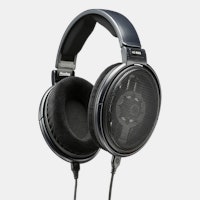
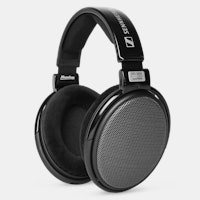

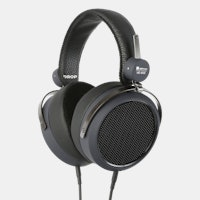
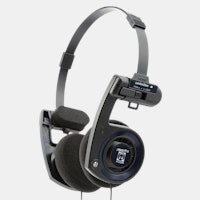
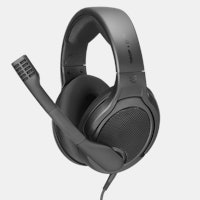
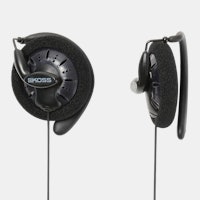
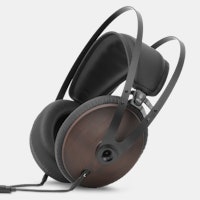
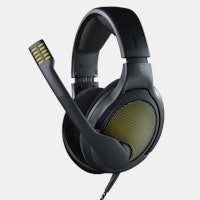
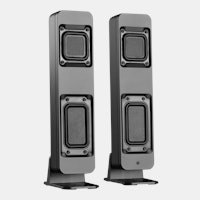
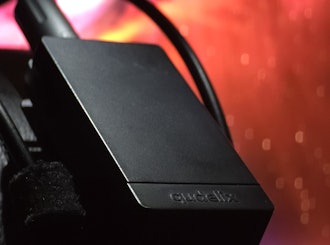
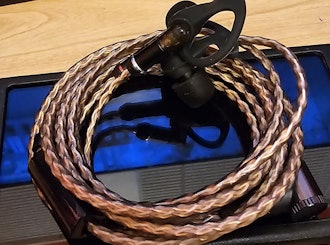
BALANCED AUDIO GEAR There are many ways to achieve professional-grade audio quality and utilizing balanced gear is one of them. We’re kicking off this discussion to debate and examine the merits of a balanced setup versus others, and to help clear up any confusion with the subject.
ASK QUESTIONS • How does balanced audio work? • What’s the difference between balanced and left/right channels? • Which qualities make for good balanced cables?
Find your answers by asking the community. There are members here who are experts in pretty much every area you can imagine, and they can help you go from beginner to pro.
Want to start your own discussion? Click here: www.massdrop.com/talk/new?community=audiophile